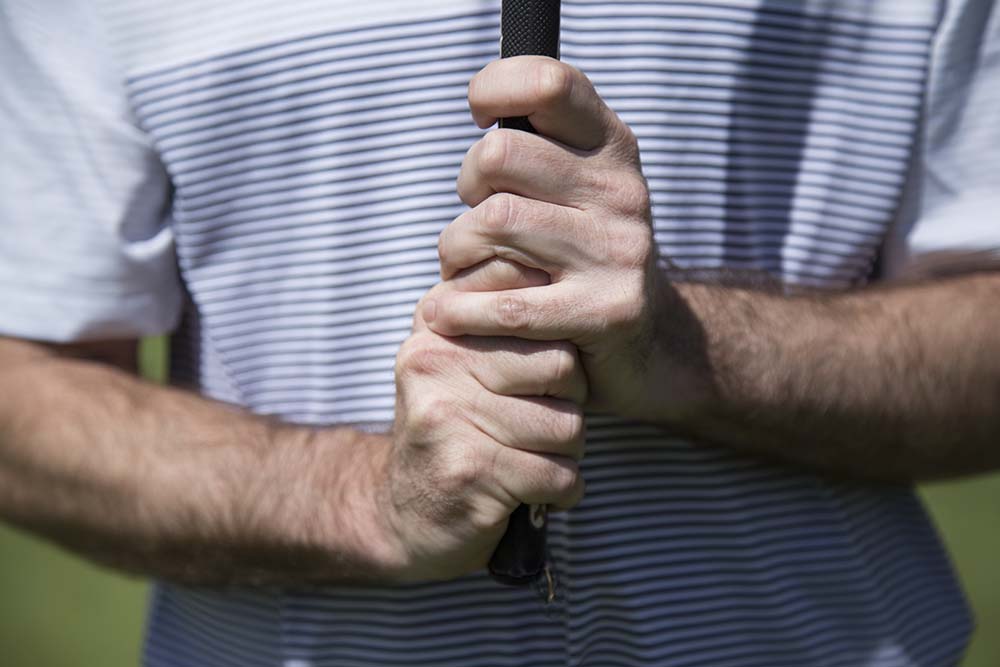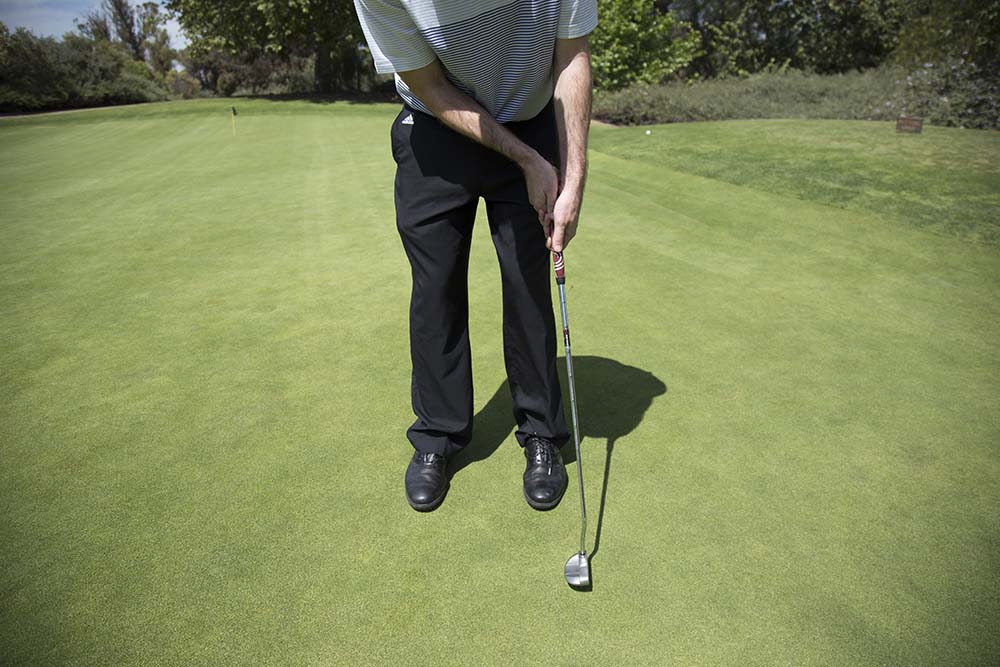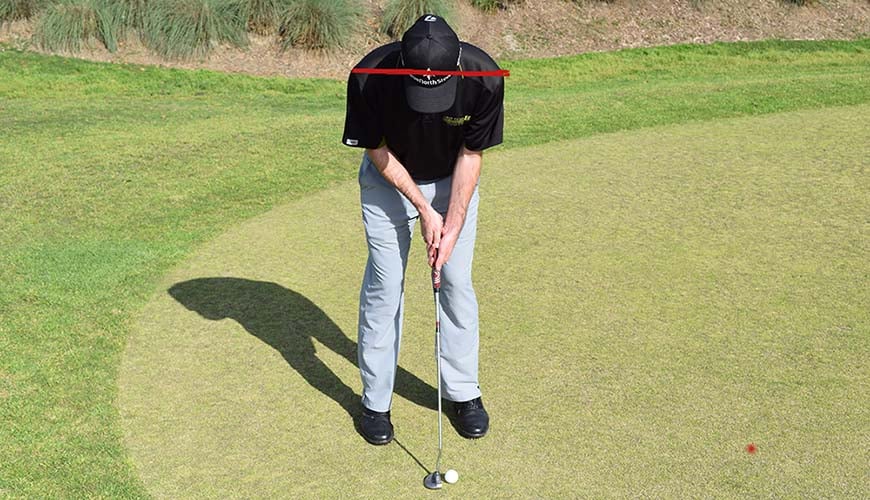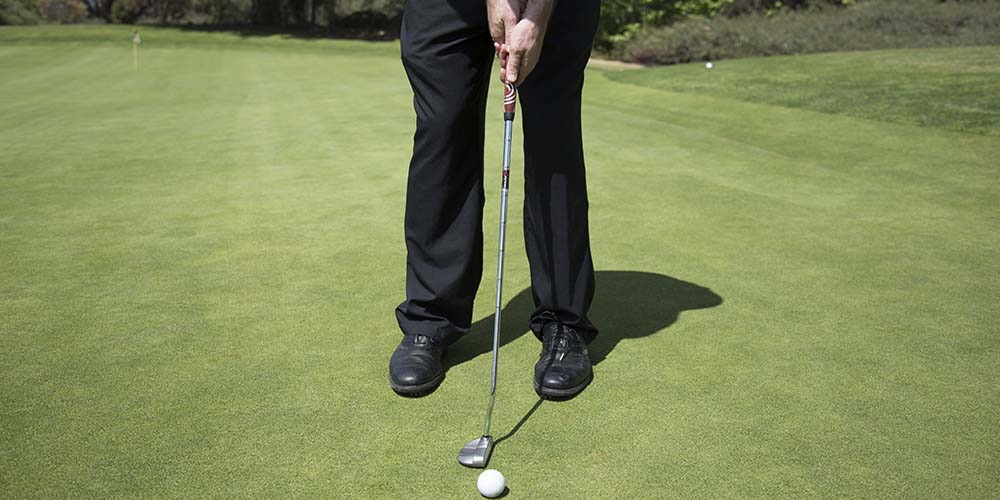Some people started calling this left hand low for a while. Many still do. Others call it lead hand low. There is no real clear explanation for why these alternate terms developed over the years. Cross handed explained things just fine. There is the regular way to position your hands on the club, and there is cross handed. No clear reason why the golf world changed to more politically correct terms here. It's a legitimate style of putting. If it works for you, own the term cross handed.
Fundamentals

Right Hand First - Take your right hand and put it at the height your left hand would normally be, near the top of the club. Make sure your thumb is pointing straight down the shaft. You want to have solid control of the club with your right hand.
Left Hand Second - Put your left hand on the club somewhere below your right hand. Find the spot that most comfortable for you to have reasonable control. You can overlap your left pinky between the index finder and ring finger of your right hand to unify your grip.

Left Wrist flat - The worst thing you can do when putting cross handed is allow your lead wrist to collapse. Make sure you set up with your left wrist relatively flat and keep it that way throughout the stroke. Always feel like your left wrist is traveling down the target line on the follow through.
What it does

Forearm Alignment - Cross handed putting helps with the average person's forearm alignment immediately. When most people putt with a traditional grip, their forearms are off plane. Their right arm sits higher than their left. If you laid a club across their forearms, the club would be pointing well left of their intended target. Putting cross handed solves this common flaw. When you reverse your hands, your right forearm drops back in line with your left creating a much better plane for you to swing on.

Level Shoulders - When most people putt, their right shoulder sits much lower than their left, like it would for a 9-iron. Sometimes this can make it difficult to make a consistent putting stroke that stays relatively low to the ground on the follow through. With your left hand lower, your left shoulder lowers, and allows you to keep the putter lower on the follow through.
Consistent Direction - Because the average player will now be in a position that is much more fundamentally sound with their upper bodies, they will have a much easier time controlling direction.
Drawbacks of Cross Handed Putting
A lot of people lose their feel for long distance with this style. It tends to work really well inside of 20 feet or so, but outside of that speed control becomes an issue. That happens because your hands and wrists aren't in their normal position. You lose feel and the ability to give it a little extra.
Jordan Speith is an exception to this rule. He uses a large forward press on his long putts to help give them a better roll. You may want to experiment with this if you're having trouble controlling the distance with this style. Some other guys on the PGA Tour switch back to putting regular style outside of 20 feet. It all depends on your preference. This style has many benefits and only a few drawbacks. If it's good enough for the best player in the world, it's worth giving a try.
